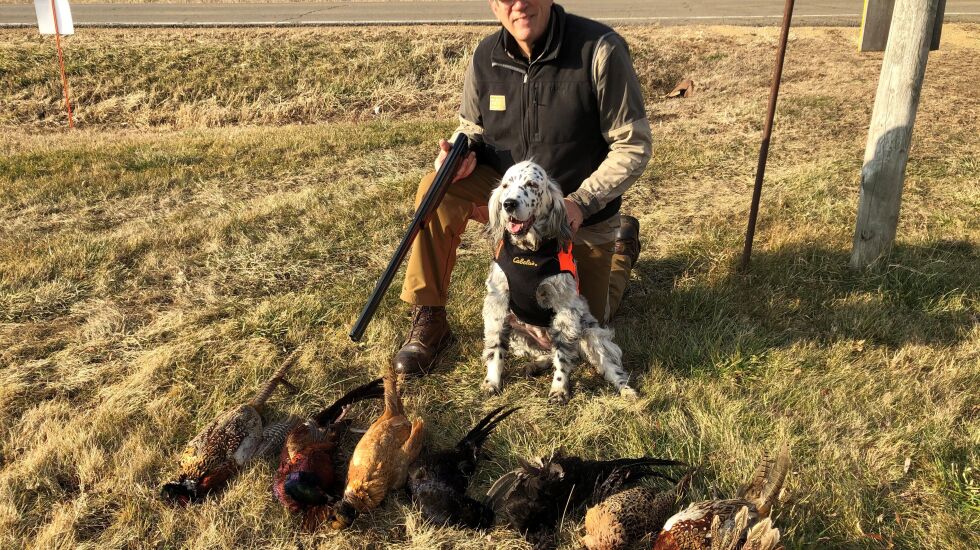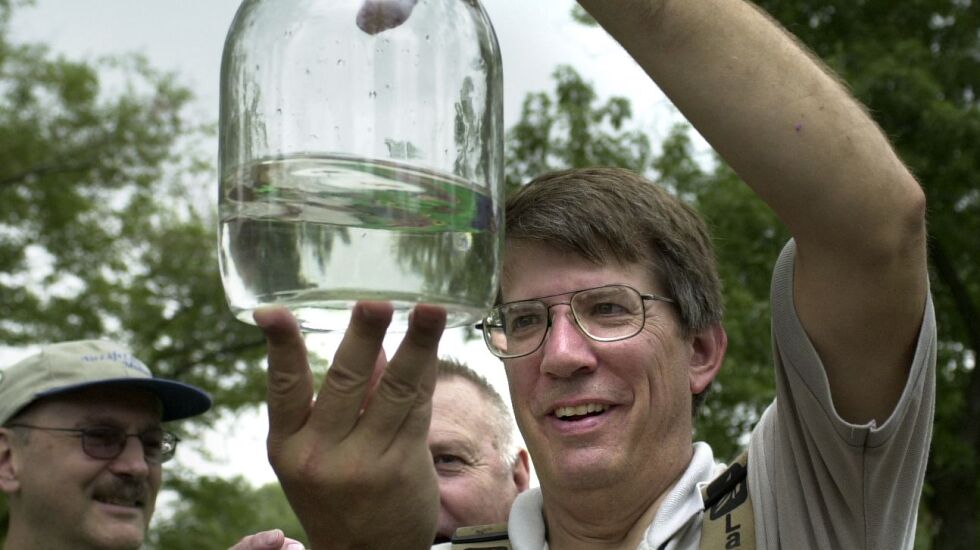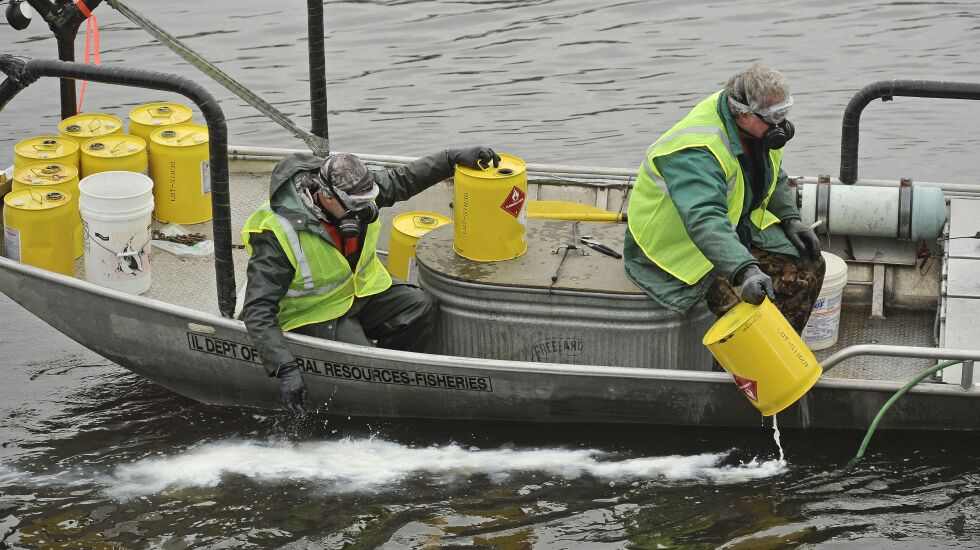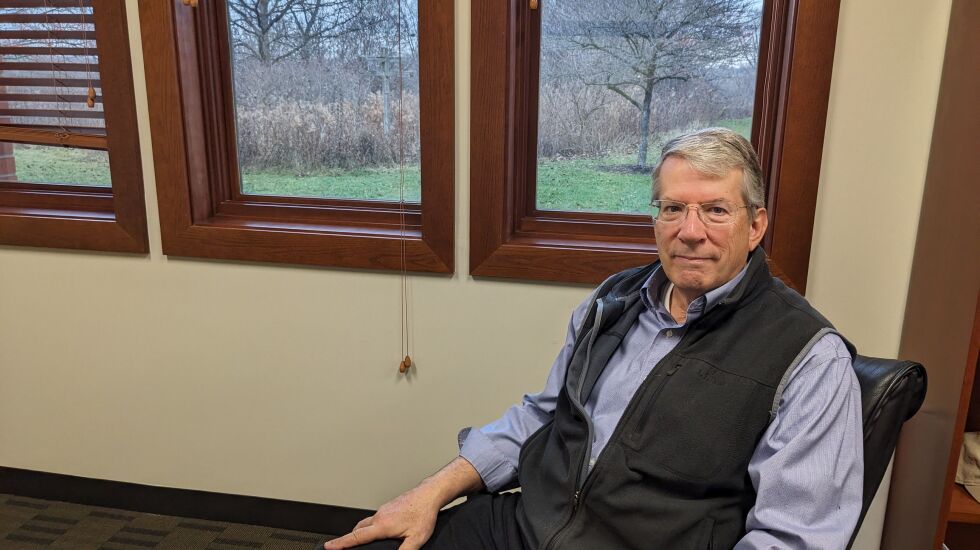
A decorative green-winged teal on the small conference table in John Rogner’s office distracted me as I asked if he was ready to retire.
“I am at peace with the decision,” he said. “I’m more mourning our dog. We put her down and just got her ashes back. My wife and I will figure out where to scatter her ashes.”
That’s Terra, their 14-year-old English Setter.

At the Illinois Department of Natural Resources’ Region 2 office in Bartlett, we discussed an eclectic public career with the U.S. Army Corps of Engineers, U.S. Fish and Wildlife Service and IDNR that ended Sunday.
“I had thought of leaving a year ago,” Rogner, 69, said.
When Gov. Pritzker didn’t bring back IDNR director Colleen Callahan,, Rogner stayed to help transition to Natalie Phelps Finnie.
Now is time.
“A year ago, we bought a log cabin south of Dixon,” he said. “A lot of restoration needs to be done. It will be our little piece of the outdoors. . . . I would find myself at the office and dreaming of the cabin.”
Born in Saginaw, Michigan, Rogner moved to Belvidere when five, then to Decatur his last two years of high school.
He earned his Bachelor of Science and Masters in biology from Northern Illinois, before going into government work.
I know at least twice Rogner was talked about as IDNR director.
“Those are political jobs and I am not really a political animal,” he said. “I can get involved in politics when I have to, but land and water is what gets me excited.”
In graduate school, he was a Youth Conservation Corps crew leader two summers at Mississippi Palisades SP for the old Illinois Department of Conservation.
After grad school, it was eight years with the USACE, first as a biologist.
“But I was a regulator,” he said. “I was instantly thrown into situations negotiating, where a lot of money was at stake and you find out a lot about people.”
He became a branch chief.
Next was FWS, where he oversaw the Barrington office on such things as endangered species and restored habitat.

His “most gratifying” time with FWS was chairing Chicago Wilderness for 10 years in the early days.
“We had a good dedicated group,” he said. “It changed the culture of how agencies and [non-profits] worked together. Before that they competed, then began to work in cooperation.”
Chicago Wilderness became an umbrella of hundreds of entities covering southeast Wisconsin, northeast Illinois, northwest Indiana and southwest Michigan.

In an inter-agency move, Rogner spent four years as IDNR assistant director under Gov. Pat Quinn and director Marc Miller. Rogner returned to FWS to lead establishment of two National Wildlife Refuges, before retiring in 2019.
Then he did a Michael Jordan and returned as IDNR assistant director.
Asked his most memorable time at the IDNR, he said, “One immediately comes to mind.”
It was in 2009 when Rogner led the multi-agency project to rotenone fish in a six-mile stretch of the Chicago Sanitary and Ship Canal down to the Lockport Lock and Dam to fight against invasive carp reaching Lake Michigan.
It produced one invasive carp, a bighead.
“What we saw were many, many channel catfish,” he said. “We had to do that to calm the other states down. We ended up proving the threat was not an imminent danger.
“That one sticks out.”

It still grates on me, even though fish were restocked and reestablished.
“That was a tense, intense, five-day period,” he said. “But our team was a model of cooperation. It made us proud of what we could do. We pulled it off. Can you image what would have happened if we had screwed up the potassium at Lockport?”
Potassium neutralizes the impact of rotenone, preventing the kill from expanding beyond the intended zone.
“May we never have to do that again,” Rogner said.
He thinks the most challenging environmental/conservation issues around Chicago are the threat of urban development and water management issues.
Plus he worries about people, especially in urban areas, who don’t have much opportunity with wildlife and become disconnected from the natural world.
On the statewide level, he worries about “agricultural intensification.”
“We have to figure how to help private land,” he said.
Illinois’ lack of public land isn’t changing any time soon.
That’s why he thinks access and habitat programs like IRAP and CREP are vital.
Rogner concedes, “We could use more federal help. There are more landowners, farmers especially, who would set land aside. We should pay them to produce wildlife. That takes policy will and support. I think private landowners would help, if you make that part of the deal.”








